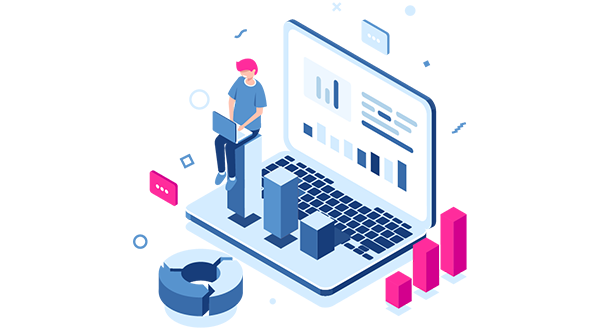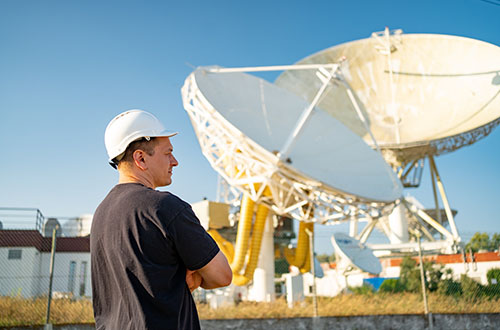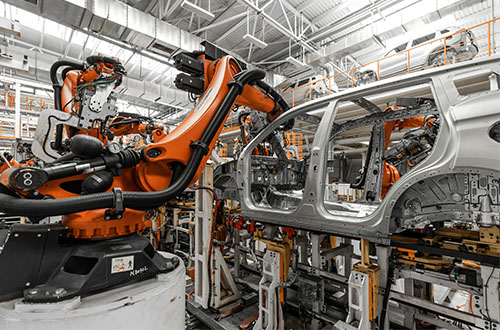

Charting the Next Frontier

The mLogica Migration Team
mLogica and AWS Prepare for Mainframe Modernization
Advancements at AWS re:Invent 2025
Setting the Direction for re:Invent 2025
As AWS re:Invent 2025 approaches, the modernization landscape stands at a pivotal juncture. Enterprises are moving beyond simple “migration” strategies and embracing modernization as a catalyst for operational excellence, predictable cost structures and competitive differentiation. This year’s event is expected to focus on intelligent automation, Agentic AI transformation tooling, next-generation workload refactoring and deeper partner-driven modernization pathways.
For organizations still operating mission-critical applications in Assembler, Easytrieve, Telon and IMS, the timing could not be more significant. The modernization ecosystem has matured, AWS’ services have expanded, and mLogica’s technology suite continues to evolve in ways that remove longstanding barriers to transforming complex legacy estates.
The upcoming re:Invent conference provides an ideal environment to examine this convergence and prepare for the modernization capabilities expected to shape 2026 and beyond.
Strengthening the mLogica–AWS Modernization Alliance
mLogica enters re:Invent 2025 with an expanded strategic role in the AWS ecosystem. The company’s proven expertise in modernizing legacy systems, its leadership in legacy mainframe technologies and its alignment with AWS’s modernization initiatives position it as one of the most comprehensive transformation partners in the field.
mLogica’s modernization stack, including LIBER*M for mainframe automation, and STAR*M for distributed DB modernization, maps cleanly onto AWS Transform’s agentic pipeline with multiple integration points already AWS-native today.
As enterprises look for proven, credible, low-risk modernization strategies, AWS continues to deepen collaboration with partners capable of addressing the full complexity of legacy environments, not just COBOL, but the nuanced technologies that define business-critical workloads.
This year, mLogica’s collaboration with AWS focuses on three progressive pillars:
- Precision Automation for Legacy Workloads
mLogica’s modernization tooling continues to expand its ability to analyze, restructure and convert Assembler, Easytrieve, Telon and IMS logic with higher fidelity and lower manual intervention. The goal is accelerated and predictable modernization outcomes, reduced dependency on scarce legacy expertise and faster deployment cycles on AWS. - Integrated Modernization Pipelines Across AWS Services
The modernization toolchain now aligns more closely than ever with AWS DevOps frameworks, CI/CD patterns and automated validation capabilities. This ensures that legacy-to-cloud transitions are not isolated projects, but part of cohesive operational framework. - Enhanced Cloud-Native Target Architectures
mLogica’s modernization strategies are designed to align legacy workloads to AWS-native services with minimal friction. This includes transitioning data from hierarchical environments like IMS into managed relational or NoSQL databases on AWS, adapting security frameworks and creating scalable runtime environments for modernized applications.
These capabilities position mLogica as a leading partner for enterprises seeking modernization without compromising stability, continuity or compliance.
Addressing Enterprise Priorities in 2026 and beyond

Organizations with Assembler, Easytrieve, Telon or IMS workloads face a unique challenge: the gap between legacy expertise and contemporary cloud engineering continues to widen
While many modernization tools handle common languages, few address the “last mile” components that prevent full mainframe retirement. This is precisely where mLogica’s ongoing partnership with AWS is making a substantive difference.
mLogica uses advanced analysis engines, structured modernization workflows and automated conversion capabilities to manage these specialized workloads with a level of precision previously considered unattainable. Combined with AWS’s maturing mainframe modernization portfolio, this creates an environment where legacy workloads can be transformed at enterprise scale, with predictable outcomes and reduced operational risk.
Modernization of Legacy Databases into AWS
A significant modernization theme for 2025 involves transforming legacy database systems, such as Sybase, Oracle, SQL Server, Teradata, Netezza, and others, into fully cloud-enabled data architectures. This is where mLogica’s STAR*M technologies play a central and differentiating role.

STAR*M technology provides the structured modernization framework needed to address these dependencies and construct clear, cloud-ready data architectures.
By unifying legacy data transformation under STAR*M and application modernization, mLogica delivers an end-to-end modernization platform that supports both code and data migration. This combination is essential for enterprises seeking full mainframe retirement without compromising data fidelity or operational continuity.
How mLogica’s Evolving Technology Portfolio Enhances AWS Modernization
Over the course of 2025, mLogica has expanded its modernization technology suite to align with advanced automation, security and cloud performance. Several advancements stand out:
Advanced AI Integration across LIBER*M & STAR*M Modernization Platforms
- Implemented GenAI, NLP, and ML for automated code analysis, business logic extraction, and validation.
- Introduced autonomous AI agents for transformation planning, testing, and optimization.
- Delivered up to 40% faster modernization with improved accuracy and reduced rework.
LIBER*M TPF (Transaction Processing Facility Modernization)
- Launched dedicated TPF modernization engine for assembler-to-modern code migration.
- Supports microservices and API-first architectures for high-transaction industries (aviation, travel, banking)
- Jointly developed with Hyperscalers for transactional scalability and operational resilience.
LIBER*M BLE (Business Logic Extraction)
- Enhanced with large language model capabilities for multi-language code understanding and dependency mapping.
- Automated documentation and regression testing for improved transparency and delivery speed.
- Integrated BLE with AWS, Azure, and GCP pipelines for unified modernization governance.
Why Organizations Should Prioritize 2026 Modernization Planning
As the industry prepares for re:Invent 2025, enterprises running legacy workloads have a significant opportunity, however, with a narrowing window, to modernize before operational risk increases or talent shortages intensify. Organizations taking early steps this year will benefit from smoother planning cycles, improved cost forecasting and early adoption of new AWS modernization capabilities.
mLogica’s structured assessment frameworks, modernization accelerators and deep experience in legacy databases and mainframe technologies, such as Assembler, Easytrieve, Telon and IMS, deliver a strong foundation for enterprises seeking to initiate or expand cloud transformation initiatives ahead of the event.
A Strategic Year Ahead for Modernization
This year’s re:Invent represents a new phase of modernization maturity across the AWS ecosystem. As mLogica and AWS continue strengthening their collaboration, organizations will gain access to capabilities that redefine what is possible when transforming complex mainframe environments.
The path forward is clear: modernization is no longer simply an IT initiative but a strategic enabler of business agility, resilience and growth. With mLogica’s expanding technology suite and AWS’s modernized platform ecosystem, enterprises can move with confidence toward cloud-native architectures that support the next generation of digital modernization.









































